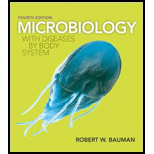
Microbiology with Diseases by Body System (4th Edition)
4th Edition
ISBN: 9780321918550
Author: Robert W. Bauman Ph.D.
Publisher: PEARSON
expand_more
expand_more
format_list_bulleted
Question
Chapter 16, Problem 1MC
Summary Introduction
Introduction:
B cells or B lymphocytes are immune cells, produced and matured in the red bone marrow. Plasma cells are differentiated B cells that secrete antibodies into the lymph or blood. Antibodies are classified into five, namely antibody IgM, IgG, IgA, IgE, and IgD. Antibodies play a crucial role in the immune system, they destroy pathogens by recognizing their corresponding antigens. B cells have receptors for recognition of antigens and activate the antibody-mediated immune response. They act against extracellular pathogens or toxins and involved in the humoral immune response.
Expert Solution & Answer
Want to see the full answer?
Check out a sample textbook solution
Students have asked these similar questions
What is the structure and function of Eukaryotic cells, including their organelles? How are Eukaryotic cells different than Prokaryotic cells, in terms of evolution which form of the cell might have came first? How do Eukaryotic cells become malignant (cancerous)?
What are the roles of DNA and proteins inside of the cell? What are the building blocks or molecular components of the DNA and proteins? How are proteins produced within the cell? What connection is there between DNA, proteins, and the cell cycle? What is the relationship between DNA, proteins, and Cancer?
Why cells go through various types of cell division and how eukaryotic cells control cell growth through the cell cycle control system?
Chapter 16 Solutions
Microbiology with Diseases by Body System (4th Edition)
Ch. 16 - Why are the activities of B and T cells called...Ch. 16 - Why are exogenous epitopes processed in vesicles...Ch. 16 - Why did scientists give the name perforin to a...Ch. 16 - Plasma cells are vital for protection against...Ch. 16 - Microsporidiosis Darius is sick, which is not...Ch. 16 - Why is passive immunity effective more quickly...Ch. 16 - Prob. 1MCCh. 16 - Prob. 2MCCh. 16 - Rejection of a foreign skin graft is an example of...Ch. 16 - An autoantigen is ________________. a. an antigen...
Ch. 16 - Among the key molecules that control cell-mediated...Ch. 16 - Which of the following lymphocytes predominates in...Ch. 16 - Prob. 7MCCh. 16 - Which cells express MHC class I molecules in a...Ch. 16 - In which of the following sites in the body can B...Ch. 16 - Tc cells recognize epitopes only when the latter...Ch. 16 - Prob. 1MTFCh. 16 - Prob. 2MTFCh. 16 - Prob. 3MTFCh. 16 - Prob. 4MTFCh. 16 - Prob. 5MTFCh. 16 - Match each cell in the left column with its...Ch. 16 - Match each type of immunity in the left column...Ch. 16 - Label the parts of the immunoglobulin below.Ch. 16 - The nearby image is a transmission electron...Ch. 16 - When is antigen processing an essential...Ch. 16 - Why does the body have both antibody and...Ch. 16 - Why is it advantageous for the lymphatic system to...Ch. 16 - Contrast innate defenses with adaptive immunity.Ch. 16 - How does requiring the immune system to process...Ch. 16 - Scientists can develop genetically deficient...Ch. 16 - Human immunodeficiency virus (HIV) preferentially...Ch. 16 - What would happen to a person who failed to make...Ch. 16 - Prob. 7CTCh. 16 - Some materials, such as metal bone pins and...Ch. 16 - Prob. 9CTCh. 16 - The cross-sectional area of the afferent lymphatic...Ch. 16 - Two students are studying for an exam on the bodys...Ch. 16 - In general, what sorts of pathogens might be able...Ch. 16 - What sorts of pathogens could successfully attack...Ch. 16 - As part of the treatment for some cancers,...Ch. 16 - Prob. 1CM
Knowledge Booster
Similar questions
- In one paragraph show how atoms and they're structure are related to the structure of dna and proteins. Talk about what atoms are. what they're made of, why chemical bonding is important to DNA?arrow_forwardWhat are the structure and properties of atoms and chemical bonds (especially how they relate to DNA and proteins).arrow_forwardThe Sentinel Cell: Nature’s Answer to Cancer?arrow_forward
- Molecular Biology Question You are working to characterize a novel protein in mice. Analysis shows that high levels of the primary transcript that codes for this protein are found in tissue from the brain, muscle, liver, and pancreas. However, an antibody that recognizes the C-terminal portion of the protein indicates that the protein is present in brain, muscle, and liver, but not in the pancreas. What is the most likely explanation for this result?arrow_forwardMolecular Biology Explain/discuss how “slow stop” and “quick/fast stop” mutants wereused to identify different protein involved in DNA replication in E. coli.arrow_forwardMolecular Biology Question A gene that codes for a protein was removed from a eukaryotic cell and inserted into a prokaryotic cell. Although the gene was successfully transcribed and translated, it produced a different protein than it produced in the eukaryotic cell. What is the most likely explanation?arrow_forward
- Molecular Biology LIST three characteristics of origins of replicationarrow_forwardMolecular Biology Question Please help. Thank you For E coli DNA polymerase III, give the structure and function of the b-clamp sub-complex. Describe how the structure of this sub-complex is important for it’s function.arrow_forwardMolecular Biology LIST three characteristics of DNA Polymerasesarrow_forward
arrow_back_ios
SEE MORE QUESTIONS
arrow_forward_ios
Recommended textbooks for you

 Medical Terminology for Health Professions, Spira...Health & NutritionISBN:9781305634350Author:Ann Ehrlich, Carol L. Schroeder, Laura Ehrlich, Katrina A. SchroederPublisher:Cengage Learning
Medical Terminology for Health Professions, Spira...Health & NutritionISBN:9781305634350Author:Ann Ehrlich, Carol L. Schroeder, Laura Ehrlich, Katrina A. SchroederPublisher:Cengage Learning Biology: The Dynamic Science (MindTap Course List)BiologyISBN:9781305389892Author:Peter J. Russell, Paul E. Hertz, Beverly McMillanPublisher:Cengage Learning
Biology: The Dynamic Science (MindTap Course List)BiologyISBN:9781305389892Author:Peter J. Russell, Paul E. Hertz, Beverly McMillanPublisher:Cengage Learning


Medical Terminology for Health Professions, Spira...
Health & Nutrition
ISBN:9781305634350
Author:Ann Ehrlich, Carol L. Schroeder, Laura Ehrlich, Katrina A. Schroeder
Publisher:Cengage Learning

Biology: The Dynamic Science (MindTap Course List)
Biology
ISBN:9781305389892
Author:Peter J. Russell, Paul E. Hertz, Beverly McMillan
Publisher:Cengage Learning


